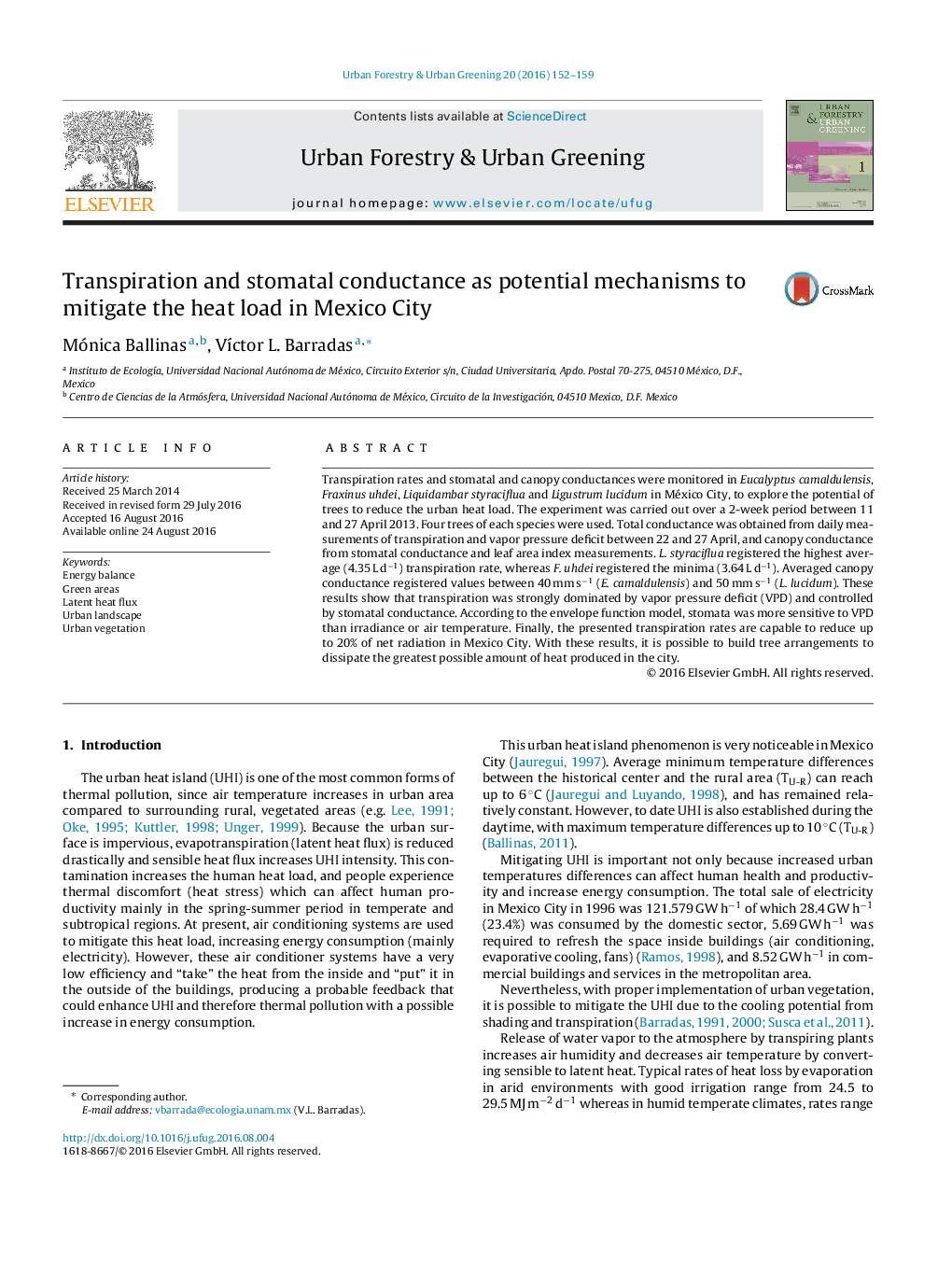| کد مقاله | کد نشریه | سال انتشار | مقاله انگلیسی | نسخه تمام متن |
|---|---|---|---|---|
| 6461898 | 1421870 | 2016 | 8 صفحه PDF | دانلود رایگان |

- We explore tree transpiration potentiality to reduce urban heat loads in Mexico City.
- Tree transpiration was strongly dominated by VPD and controlled by gS.
- Observed transpiration rates are capable to reduce up to 20% of net radiation.
- It is possible to build tree arrangements to enhance UHI mitigation in Mexico City.
Transpiration rates and stomatal and canopy conductances were monitored in Eucalyptus camaldulensis, Fraxinus uhdei, Liquidambar styraciflua and Ligustrum lucidum in México City, to explore the potential of trees to reduce the urban heat load. The experiment was carried out over a 2-week period between 11 and 27 April 2013. Four trees of each species were used. Total conductance was obtained from daily measurements of transpiration and vapor pressure deficit between 22 and 27 April, and canopy conductance from stomatal conductance and leaf area index measurements. L. styraciflua registered the highest average (4.35 L dâ1) transpiration rate, whereas F. uhdei registered the minima (3.64 L dâ1). Averaged canopy conductance registered values between 40 mm sâ1 (E. camaldulensis) and 50 mm sâ1 (L. lucidum). These results show that transpiration was strongly dominated by vapor pressure deficit (VPD) and controlled by stomatal conductance. According to the envelope function model, stomata was more sensitive to VPD than irradiance or air temperature. Finally, the presented transpiration rates are capable to reduce up to 20% of net radiation in Mexico City. With these results, it is possible to build tree arrangements to dissipate the greatest possible amount of heat produced in the city.
213
Journal: Urban Forestry & Urban Greening - Volume 20, 1 December 2016, Pages 152-159